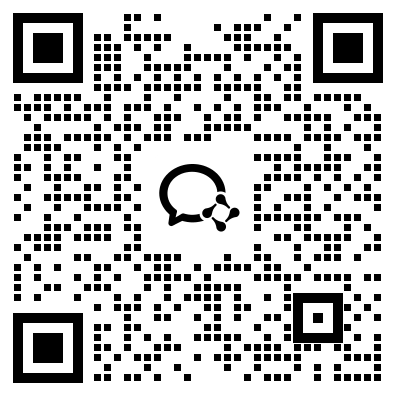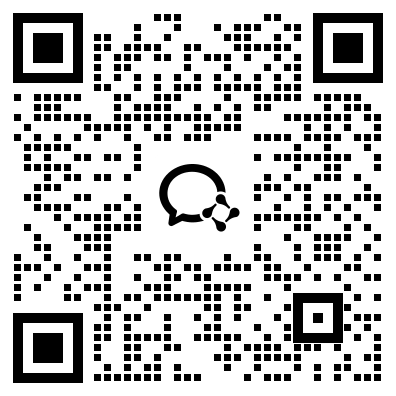特惠-26考研冲刺
特惠-27考研课
双证-在职硕士
免联考-同等学力
复试分数线
26复试全面指导
模拟复试面试
26考研-全套真题
26考研估分
保研-路线图
27考研-智能择校
27考研-英语测评
27考研-新大纲对比
热门-计算机择校

扫码加入训练营
牢记核心词
学习得礼盒
2015考研英语复习正是强化复习阶段,考研英语阅读在考研英语中占了40分,所以考研英语阅读是英语科目中重要的一项。新东方名师范猛老师曾建议过考研生需要坚持每天泛读10-15分钟的英文原刊。强烈推荐了杂志《经济学人》.杂志中的文章也是考研英语的主要材料来源.希望考研考生认真阅读,快速提高考研英语阅读水平。
Human decision-making; Not so smart now;
人类的决策;聪明不在;
Thinking Fast and Slow, by Daniel Kahneman.
《思考,快与慢》丹尼尔·卡尼曼著。
Towards the end of “Thinking, Fast and Slow”, Daniel Kahneman laments that he and his latecollaborator, Amos Tversky, are often credited with showing that humans make “irrational”choices. That term is too strong, he says, to describe the variety of mental mishaps towhich people systematically fall prey. Readers of his book may disagree. Mr Kahneman, anIsraeli-American psychologist and Nobel economics laureate, has delivered a full catalogueof the biases, shortcuts and cognitive illusions to which our species regularly succumbs. Indoing so he makes it plain that Homo economicus—the rational model of human behaviourbeloved of economists—is as fantastical as a unicorn.
在《思考:快与慢》一书的结尾之处,丹尼尔卡内曼说对人们的一些赞誉感到悲痛,人们赞赏他和他已故的合作者阿莫斯特沃斯基发现了人类做“无理性决定”,他说,用这个说法来形容“人们可能受到的各种方的面精神问题的困扰太严重了”。这本书的读者也许不赞同这个说法。卡内曼拥有以色列和美国双重国籍,心理学家,诺贝尔经济学奖获得者,他将人类通常会有的偏见,心理捷径,和认知幻象进行了系统全面的分类并清晰的阐释了新鲜的“经济人”的概念(Homo economicus),这是经济学家所钟爱的人类行为的理性分类。
In one experiment described by Mr Kahneman, participants asked to imagine that they havebeen given 50 pound behave differently depending on whether they are then told they can“keep” 20 pound or must “lose” 30 pound—though the outcomes are identical. He also showsthat it is more threatening to say that a disease kills “1,286 in every 10,000 people”, than tosay it kills “24.14% of the population”, even though the second mention is twice as deadly.Vivid language often overrides basic arithmetic.
卡内曼描述了一个实验:要求实验参与者想象他们每人得到50英镑,尽管结果一样—都被告知他们只能留下20镑,而必须要损失30镑,但他们每个人表现却大不相同。卡内曼还告诉我们,如果说一种疾病使每10000人中有1286人死亡,或者表述为它使占人口总数的24.14%的人死亡,尽管后者的死亡人数是前者的两倍,但前者更有震慑力。形象生动的语言比简单的数字更为感染力。
Some findings are downright peculiar. Experimental subjects who have been “primed” tothink of money, perhaps by seeing a picture of dollar bills, will act more selfishly. So ifsomeone nearby drops some pencils, these subjects will pick up fewer than their non-primedcounterparts. Even obliquely suggesting the concept of old age will inspire people to walkmore slowly—though feeling elderly never crossed their mind, they will later report.
有些实验结果十分奇怪。那些在看到美元的图像,更容易想到钱的人的实验参与者通常会表现得更为自私。如果坐在他们身旁的人有人掉了铅笔,相比较那些没那么容想到钱的人,他们肯弯腰捡起笔的几率要大大降低。这甚至间接地暗示:想到老年的意象会使人们走路速度放缓—尽管他们自己从没有老年的感觉,这些结论稍后将后发布。
After all this the human brain looks less like a model of rationality and more like a giddyteenager: flighty, easily distracted and lacking in self-awareness. Yet this book is not acounsel of despair. Its awkward title refers to Mr Kahneman's two-tier model of cognition: “System 1” is quick, intuitive and responsible for the quirks and mistakes described above(and many others). “System 2”, by contrast, is slow, deliberative and less prone to error.System 2 kicks in when we are faced with particularly complex problems, but much of thetime it is all too happy to let the impulsive System 1 get its way. (Readers may be remindedof Freud's “id” and “superego”, though Mr Kahneman never mentions this particularintellectual ancestor.)
最后,作者得出结论,与其说人类的大脑是理性的集合,还不如说它更像一个轻浮的少年:反复无常,容易分神,缺少自觉意识。当然这本书不是人们悲观的忠告。书的标题有些拗口,但它表明了卡内曼'对认知的双层分类模型:“系统一,快速,受直觉引导,易犯上述的错误。相比之下,系统二则缓慢,慎重思考,不易犯错误。只有当我们面临着复杂的问题时,系统二才会启动,更多的时候,是让受直觉影响的系统一来替我们做决定。(读者可能会想到弗洛伊德的“本我”“超我”,但卡内曼在书中压根没有提这位贡献卓著的前人)
What, then, is System 1 good for? Rather a lot, it turns out. In a world that often demandsswift judgment and rapid decision-making (fight or flight?), a creature who solely reliedon deliberative thinking wouldn't last long. Moreover, System 1 generally works well. As MrKahneman says, “most of our judgments and actions are appropriate most of the time”. Heurges readers to counteract what he considers to be mistakes of System 1 thinking, such asthe “loss aversion” that deters people from accepting favourable gambles (such as a 50-50chance to win 200 dollar or lose 100 dollar). He also recommends checking the performanceof an investment portfolio no more than once a quarter, to limit needless anguish overshort-term fluctuations and the “useless churning” of shares.
那么,系统一适合做什么呢?答案是:很多。在这个世界里,我们常常需要迅速做出判断,并快速做出决定(开战与否?)一个人不能只是依靠深思熟虑,这样是不行的。并且,系统一通常可以很好的运行。正如卡内曼所说:“我们大部分的判断和决策通常都很合理”他建议读者自觉避免系统一思考方式会犯的错误,例如“讨厌损失”会让人们不愿接受有利可图的打赌(比如,有一半对一半的机会来赢200美元或者损失100美元)他也强烈建议我们每次在观察证券投资的行情时考虑的时间不要超过15分钟,这样会减少我们对短期内股价的浮动和调整不必要的担心。
Mr Kahneman does not dwell on the possible evolutionary origins of our cognitive biases,nor does he devote much time to considering why some people seem naturally better atavoiding error than others. Still this book, his first for a non-specialist audience, is aprofound one. As Copernicus removed the Earth from the centre of the universe andDarwin knocked humans off their biological perch, Mr Kahneman has shown that we are notthe paragons of reason we assume ourselves to be. Often hailed as the father of behaviouraleconomics (with Tversky as co-parent), his work has influenced a range of disciplines andhas even inspired some policy.
卡内曼并没有详述我们认知偏见的进化源头,也没有花太多笔墨解释为什么有些人天生就比其他人善于规避错误。但他的这本书作为给大众的普及型读物是十分出色。正如哥白尼提出了地球是宇宙的中心,达尔文指出人类不是万物之灵,卡内曼也展示了我们人类并没有自己想象的那样充满理性的智慧。卡内曼被人们称为行为经济学之父(和特沃斯基并称),他的理论影响了许多学科,甚至给一些政策的制定提供了参考。
But the true consequences of his findings are only starting to emerge. When he presents thepoor victims of his experiments with conclusive proof of their errors, the typical reaction isnot a chastened pledge to shape up, but confused silence, followed by business as usual.No one likes to be told he is wrong.
基于他的发现,其真正结论现在才开始显现出来。当他拿出确凿的证据给可怜的实验者们看,来证明他们的错误时,人们明显的反应不是发誓改正这些错误,而是非常困惑的保持了沉默,紧接着,一切又回归原样。没有人喜欢别人告诉自己做错了。
8月底,很多高校2015年考研招生简章已经发布,请广大15年考生关注,预计到8月底9月初,2015年全国硕士研究生招生简章会陆续发布完成,新东方在线小编第一时间跟踪发布,请大家收藏关注!另有研究生专业目录、考研参考书等最新考研信息,帮助考生及时了解目标院校招生政策及信息。另有西医综合专业考试
新东方名师考研课程 购买进行中
【英语阅读资料】这里有↑↑↑

 资料下载
资料下载
2014年-2025年考研历年真题汇总
发布时间:2024-04-25扫码添加【考研班主任】
即可领取资料包
考研大纲PDF电子版下载-历年(附解析)
发布时间:2024-04-25扫码添加【考研班主任】
即可领取资料包
2026年考研政数英备考资料zip压缩包
发布时间:2024-04-25扫码添加【考研班主任】
即可领取资料包
考研英语大纲词汇5500打印版(基础必备)
发布时间:2024-04-25扫码添加【考研班主任】
即可领取资料包
新东方在线考试模拟题【12套】
发布时间:2024-04-25扫码添加【考研班主任】
即可领取资料包
2026年考研专业课知识点总结
发布时间:2024-04-25扫码添加【考研班主任】
即可领取资料包
新东方考研资料下载地址
发布时间:2023-05-17新东方在线考研资料合集
下载方式:微信扫码,获取网盘链接

目录:
1.2013-2023年近10年政数英真题及解析PDF版(新东方)
2.2013-2023年专业课考试历年真题及解析PDF版
3.24考研复习备考资料大合集:大纲+备考资料+词汇书+考前押题+自命题
资料介绍:
1.2013-2023年近10年政数英真题及解析PDF版(新东方)
 、
、
2.2013-2023年专业课考试历年真题及解析PDF版


3.24考研复习备考资料大合集

3.24考研复习备考资料:考研大纲

3.24考研复习备考资料:政数英备考资料+自命题真题

------------------
考研备考过程中,尤其是专业课部分,参考往年的考试真题,对于我们的复习有更好的帮助。北京大学考研真题资料都有哪些?小编为大家进行了汇总。
北京大学考研真题资料-公共课

北京大学考研真题资料-专业课


以上就是关于“北京大学考研真题资料下载(历年汇总)”的整理,更多考研资料下载,请关注微信获取下载地址。
2024考研公共课必背知识点汇总
发布时间:2023-01-03扫码添加【考研班主任】
即可领取资料包
2013-2023考研历年真题汇总
发布时间:2023-01-03扫码添加【考研班主任】
即可领取资料包
考研英语大纲词汇(PDF可打印)
发布时间:2023-01-03扫码添加【考研班主任】
即可领取资料包
2024考研专业课知识点总结
发布时间:2023-01-03扫码添加【考研班主任】
即可领取资料包
2023考研政治 内部押题 PDF
发布时间:2022-11-16扫码添加【考研班主任】
即可领取资料包
徐涛:23考研预测六套卷
发布时间:2022-11-16扫码添加【考研班主任】
即可领取资料包
考研政数英冲刺资料最新整理
发布时间:2022-11-16扫码添加【考研班主任】
即可领取资料包
23考研答题卡模板打印版
发布时间:2022-11-16扫码添加【考研班主任】
即可领取资料包
2023考研大纲词汇5500PDF电子版
发布时间:2022-07-28扫码添加【考研班主任】
即可领取资料包
考研历年真题(公共课+专业课)
发布时间:2022-07-28扫码添加【考研班主任】
即可领取资料包
考研英语阅读100篇附解析及答案
发布时间:2022-01-07扫码添加【考研班主任】
即可领取资料包
新东方考研学霸笔记整理(打印版)
发布时间:2022-01-07扫码添加【考研班主任】
即可领取资料包
2001-2021年考研英语真题答案(可打印版)
发布时间:2022-01-07扫码添加【考研班主任】
即可领取资料包
考研英语词汇5500(完整版下载)
发布时间:2022-01-07扫码添加【考研班主任】
即可领取资料包
2022考研政审表模板精选10套
发布时间:2022-01-07扫码添加【考研班主任】
即可领取资料包
历年考研真题及答案 下载
发布时间:2021-12-09扫码添加【考研班主任】
即可领取资料包
考研政审表模板汇总
发布时间:2020-06-17扫码添加【考研班主任】
即可领取资料包
近5年考研英语真题汇总
发布时间:2020-06-17扫码添加【考研班主任】
即可领取资料包
考研英语大纲词汇5500
发布时间:2020-06-17扫码添加【考研班主任】
即可领取资料包
2022考研12大学科专业排名汇总
发布时间:2019-11-21扫码添加【考研班主任】
即可领取资料包
2023考研政治复习备考资料【珍藏版】
发布时间:2019-11-21扫码添加【考研班主任】
即可领取资料包
考研英语万能模板+必备词汇+范文
发布时间:2019-11-21扫码添加【考研班主任】
即可领取资料包
考研数学一、二、三历年真题整理
发布时间:2019-11-21扫码添加【考研班主任】
即可领取资料包

添加班主任领资料
添加考研班主任
免费领取考研历年真题等复习干货资料

 推荐阅读
推荐阅读
为了让考研的同学更高效地复习考研英语,新东方在线考研频道整理了“考研英语1阅读错几个后的复习计划”,考研的同学可以了解一下,希望对大家有所帮助。
为了让考研的同学更高效地复习考研英语,新东方在线考研频道整理了“考研英语二阅读篇数及题型分析”,考研的同学可以了解一下,希望对大家有所帮助。
为了让考研的同学更高效地复习考研英语,新东方在线考研频道整理了“考研英语阅读理解的总结与反思”,考研的同学可以了解一下,希望对大家有所帮助。
来源 : 网络 2025-06-13 08:02:00 关键字 : 考研英语阅读理解
为了让考研的同学更高效地复习考研英语,新东方在线考研频道整理了“提高考研英语一阅读理解的五大策略”,考研的同学可以了解一下,希望对大家有所帮助。
为了让考研的同学更高效地复习考研英语,新东方在线考研频道整理了“探索考研英语阅读文章的逻辑结构”,考研的同学可以了解一下,希望对大家有所帮助。
来源 : 网络 2025-06-12 08:03:00 关键字 : 考研英语阅读

 资料下载
资料下载
扫码添加【考研班主任】
即可领取资料包
扫码添加【考研班主任】
即可领取资料包
扫码添加【考研班主任】
即可领取资料包
扫码添加【考研班主任】
即可领取资料包
扫码添加【考研班主任】
即可领取资料包
扫码添加【考研班主任】
即可领取资料包
新东方在线考研资料合集
下载方式:微信扫码,获取网盘链接

目录:
1.2013-2023年近10年政数英真题及解析PDF版(新东方)
2.2013-2023年专业课考试历年真题及解析PDF版
3.24考研复习备考资料大合集:大纲+备考资料+词汇书+考前押题+自命题
资料介绍:
1.2013-2023年近10年政数英真题及解析PDF版(新东方)
 、
、
2.2013-2023年专业课考试历年真题及解析PDF版


3.24考研复习备考资料大合集

3.24考研复习备考资料:考研大纲

3.24考研复习备考资料:政数英备考资料+自命题真题

------------------
考研备考过程中,尤其是专业课部分,参考往年的考试真题,对于我们的复习有更好的帮助。北京大学考研真题资料都有哪些?小编为大家进行了汇总。
北京大学考研真题资料-公共课

北京大学考研真题资料-专业课


以上就是关于“北京大学考研真题资料下载(历年汇总)”的整理,更多考研资料下载,请关注微信获取下载地址。
扫码添加【考研班主任】
即可领取资料包
扫码添加【考研班主任】
即可领取资料包
扫码添加【考研班主任】
即可领取资料包
扫码添加【考研班主任】
即可领取资料包
扫码添加【考研班主任】
即可领取资料包
扫码添加【考研班主任】
即可领取资料包
扫码添加【考研班主任】
即可领取资料包
扫码添加【考研班主任】
即可领取资料包
扫码添加【考研班主任】
即可领取资料包
扫码添加【考研班主任】
即可领取资料包
扫码添加【考研班主任】
即可领取资料包
扫码添加【考研班主任】
即可领取资料包
扫码添加【考研班主任】
即可领取资料包
扫码添加【考研班主任】
即可领取资料包
扫码添加【考研班主任】
即可领取资料包
扫码添加【考研班主任】
即可领取资料包
扫码添加【考研班主任】
即可领取资料包
扫码添加【考研班主任】
即可领取资料包
扫码添加【考研班主任】
即可领取资料包
扫码添加【考研班主任】
即可领取资料包
扫码添加【考研班主任】
即可领取资料包
扫码添加【考研班主任】
即可领取资料包
扫码添加【考研班主任】
即可领取资料包

 阅读排行榜
阅读排行榜
 相关内容
相关内容